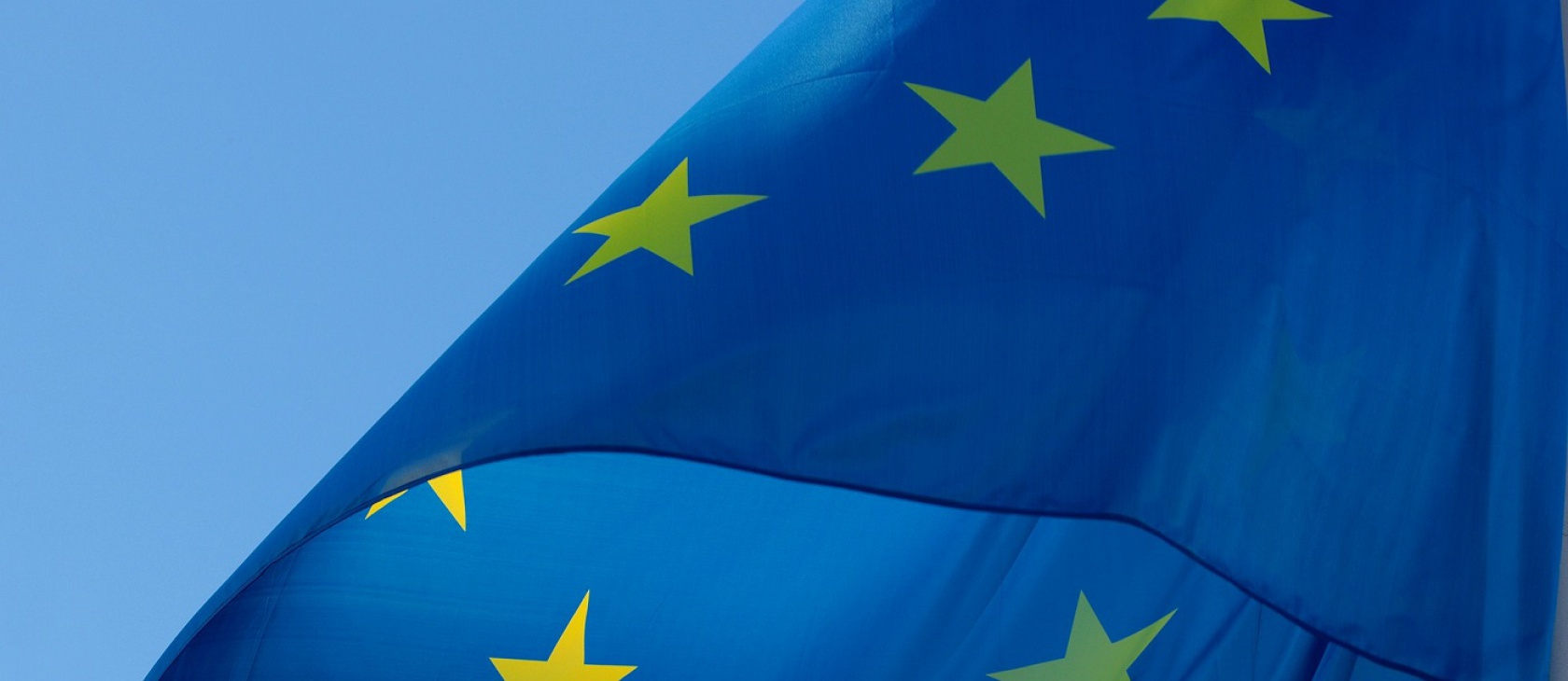The Italian general election on Sunday may represent a turning point for Italy and the European Union. Will Italy get caught up in the right-wing populist wind blowing across many European countries? By Monday, the European Union could face one more populist and Eurosceptic government as the movement grows stronger within its member nations. Or it may beat back the tide of populism, at least for the moment.
Who are the players
On March 4, Italian voters will elect the 630 members of the Chamber of Deputies (Lower House) and the 315 members of the Senate of the Republic (Upper House). Last October, a new electoral law established the so-called Rosatellum bis, a mixed system. Under its terms, 36 percent of seats are allocated using first-past-the-post voting (in which voters indicate on a ballot the candidate of their choice and the candidate who receives the most votes wins), and 64 percent using the proportional D’Hondt method, with one round of voting.
The cabinet of Paolo Gentiloni, the current prime minister, was formed when the previous prime minister, Matteo Renzi of the Democratic Party (PD), stepped down in December 2016. Renzi stepped aside after his constitutional reform to modify the composition and powers of the Italian Parliament was rejected by the people in a constitutional referendum. Last April, Renzi was reelected secretary of the Democratic Party and is a candidate for prime minister once again.
The other two major parties in Italy are the Five Star Movement (M5S) and Lega Nord (LN), headed by Luigi Di Maio and Matteo Salvini, respectively. There are three different major political factions in Italy: the center-Left PD, the populist M5S, and the center-Right coalition between LN, Fratelli d’Italia, and Silvio Berlusconi's Forza Italia.
What are Italian populists promising?
In Italy populism is widespread but diverse. There is a populism inspired by migration, Euroscepticism, anti-Islamic issues. Regional separatism also drives people to support the Lega Nord. Silvio Berlusconi’s populism is based around his personal magnetism - what the journalist Eugenio Scalfari called his “charm.” (Scalfari likened Berlusconi’s policymaking to a three-card Monte game.)
As Sunday’s election approaches, populist leaders are toning down their attacks on the EU (which Berlusconi supports) – instead promising increased government spending and interventionism. At the beginning of January, Five Star leader Luigi Di Maio backpedaled on Euroscepticism, saying that now is no longer the time to exit the euro, but to focus on practical issues – like increased investments or creating a national “basic income.” Salvini made a similar pivot. Both would like to abolish former Labor Minister Elsa Fornero’s pension reforms, which raised the mandatory retirement age – something Fornero replied would cost the nation billions of euros and leave the system structurally unsustainable. Berlusconi also promises to abolish Renzi’s “Jobs Act,” which cut taxes and eased the nation’s restrictive labor laws.
How did populism come to the fore?
Populism became a serious force in Italian politics the same way it did in every other nation: The government’s failure to solve pressing issues. The center-Left government has run the country since private and public scandals overwhelmed Berlusconi. A “Cabinet of Experts,” headed by Mario Monti, was established in 2011 as an apolitical government. But as the economic crisis persisted, a new political movement was born: the Five Star Movement, founded by comedian Beppe Grillo, and said to be open to everyone dedicated to rooting out corruption.
M5S has grown rapidly in a very short time. In 2013, it won more votes than any other political party in elections for the Chamber of Deputies. However, the center-Left coalition, headed first by Enrico Letta and then by Matteo Renzi, won the most seats and led the government. Matteo Salvini led the center-Right opposition while Berlusconi, mired in scandals, decided to withdraw from public life (temporarily).
Renzi, who held office from February 2014 to December 2016, was a symbol of hope for many. But the migrant crisis evaporated his public support; hence, his defeat on the constitutional referendum and his resignation. The center-Right was back at full strength, reviving the issues of mass immigration and the European Union inaction in helping Italy face the migrant and economic crises. As Italy is coming to the end of this parliamentary term, opinion polls show that the Italian political arena is divided in three roughly equal parts, portending an unstable and unpredictable political future between the center-Right, center-Left, and populism.
And this pattern is complemented by a desire for subsidiarity – in particular, the resounding “yes” vote in the referendums in Lombardy and Veneto for regional autonomy devised by Lega Nord. In the South, a center-Right candidate won regional elections in Sicily last November – and the Five Star Movement came in second. Italy appears to be shifting to the Right, in particular to a right-wing populism which is attracting support all over Europe.
Europe’s continental drift to populism
Eurosceptic, nationalist, conservative, and anti-immigrant parties are gaining ground all over Europe. Bleak economic conditions, mass immigration, increased domestic terrorism, and political corruption have fueled a new populist movement spanning the continent. In most European countries, populists are opposition parties in Parliament, like the National Front in France, the True Finns in Finland, the Conservative People’s Party of Estonia, the Lega Nord, the Freedom Party of Austria, Jobbik in Hungary, the Golden Dawn in Greece, the Armenian Revolutionary Federation, the UK Independence Party, the Slovak National Party, and the Danish People’s Party.
The following table presents Eurosceptic, nationalist, populist parties in order of their share of the popular vote:
| Country | Party | Vote Share | Total Votes | Seats | Ideology |
| Macedonia | VMRO-DPMNE | 38.1 percent (2016) | 481,615 | 51/123 | Macedonian nationalism, Christian democracy, National conservatism. |
| Poland | Law and Justice | 37.6 percent (2015) | 5,711,687 | 235/460 | National conservatism, Christian democracy, Soft Euroscepticism |
| Czech Republic | ANO 2011 | 29.6 percent (2017) | 1,500,113 | 78/200 | Big Tent, Centrism, Populism |
| Switzerland | Swiss People’s Party | 29.4 percent (2015) | 740,954 | 65/200 | National conservatism, Economic Liberalism, Agrarianism, Euroscepticism |
| Austria | Freedom Party of Austria | 26 percent (2017) | 1,310,614 | 51/183 | National conservatism, Right-wing populism, Anti-immigration, Euroscepticism |
| Italy | Five Star Movement | 25.6 percent (2013) | 8,691,406 | 108/630 | Anti-establishment, Direct democracy, Big tent, Euroscepticism |
| Denmark | Danish People’s Party | 21.1 percent (2015) | 741,746 | 37/179 | National conservatism, Danish nationalism, Anti-immigration, Euroscepticism |
| Belgium | New Flemish Alliance | 20.3 percent (2014) | 1,366,397 | 33/150 | Flemish nationalism, Regionalism, Separatism, Conservatism, Liberal conservatism, Republicanism |
| Hungary | Jobbik | 20.2 percent (2014) | 985,029 | 23/199 | Hungarian nationalism, Anti-Zionism, Greater Hungary |
| Finland | Finns Party | 17.7 percent (2015) | 524,054 | 38/200 | Finnish nationalism, Anti-immigration, Euroscepticism |
| Latvia | National Alliance | 16.6 percent (2014) | 151,567 | 17/100 | Latvian nationalism |
| Norway | Progress Party | 15.2 percent (2017) | 444,681 | 27/169 | Right-wing populism, Conservative liberalism, Anti-immigration, Euroscepticism |
| Ireland | Sinn Féin | 13.8 percent (2016) | 295,319 | 23/166 | Irish republicanism, Left-wing nationalism, Democratic Socialism |
| France | National Front | 13.2 percent (2017) | 2,990,454 | 8/577 | French nationalism, Anti-Immigrant, Euroscepticism |
| Netherlands | Party for Freedom | 13.1 percent (2017) | 1,372,941 | 20/150 | Anti-Immigration, Anti-Islam, Euroscepticism |
| Sweden | Sweden Democrats | 12.9 percent (2014) | 801,178 | 49/349 | Swedish nationalism, Anti-immigration, Euroscepticism |
| United Kingdom | UK Independence Party | 12.6 percent (2015) | 3,881,129 | 1/650 | Hard Euroscepticism, Right-wing populism, British nationalism |
| Germany | Alternative for Germany | 12.6 percent (2017) | 5,877,094 | 94/631 | Euroscepticism, National conservatism |
| Russia | LDPR | 11.7 percent (2011) | 7,664,570 | 56/450 | Russian nationalism, Russian imperialism, Anti-Americanism |
| Czech Republic | SPD -Freedom and Direct Democracy | 10.6 percent (2017) | 538,574 | 22/200 | Direct Democracy, Hard Euroscepticism, Anti-immigration, Anti-Islam, Right-wing populism, Czech nationalism |
| Norway | Centre Party | 10.3 percent (2017) | 302,017 | 19/169 | Norwegian nationalism, Euroscepticism, Agrarianism |
| Slovakia | Slovak National Party | 8.64 percent (2016) | 225,386 | 15/150 | Slovak ultra-nationalist, Extremist, Hungarophobia, Antiziganism |
| Estonia | Conservative People’s Party of Estonia | 8.1 percent (2015) | 46,772 | 7/101 | Estonian nationalism, National conservatism, Anti-immigration, Euroscepticism, Ethnopluralism |
| Serbia | Serbian Radical Party | 8.1 percent (2016) | 306,052 | 22/250 | Serbian nationalism, Right-wing populism, Euroscepticism, National conservatism, Russophilia |
| Slovakia | Kotleba-People’s Party Our Slovakia | 8 percent (2016) | 209,779 | 14/150 | Slovak ultra-nationalist, Extremist |
| Bulgaria | National Front for the Salvation of Bulgaria | 7.3 percent (2014) | 239,101 | 10/240 | Bulgarian nationalism, National conservatism, Euroscepticism |
| Bulgaria | IMRO-Bulgarian National Movement | 7.3 percent (2014) | 239,101 | 8/240 | Bulgarian nationalism, Conservatism, Traditionalism |
| Greece | Golden Dawn | 7 percent (2015) | 379,581 | 18/300 | Greek nationalism, Anti-immigration, Megali Idea, Ultranationalism, Neo-fascist |
It is imperative to note that these parties do not share a single political ideology. However, they may fairly said to profess populist, anti-Establishment, anti-migration, and Eurosceptic positions.
A number of news events demonstrate their popularity:
- In Macedonia, last April hundreds of far-Right demonstrators broke into Parliament to stop the formation of a coalition government between Social Democratic and Albanian minority parties. More than a hundred people were injured in clashes;
- On Poland’s Independence Day, more than 60,000 right-wing protesters marched through Warsaw;
- The UK Independence Party received the greatest number of votes (27.5 percent) of any British party in the 2014 European Parliament elections, producing 24 MEPs. After its victory in the Brexit referendum, Nigel Farage resigned as UKIP leader and in the 2017 snap election, UKIP received fewer than 600,000 votes, gaining no seats;
- In the Czech Republic, the 2017 legislative elections were won by ANO 2011. Its leader, Andrej Babiš, an entrepreneur accused of fraud, promised to combat illegal immigration and to limit contacts with the European Union;
- In Austria’s legislative election, the Freedom Party of Austria, the right-wing populist and nationalist-conservative party, came in third;
- In Germany Alternative for Deutschland, the right-wing political party came in third as well, claiming 94 out of 631 seats in Bundestag;
- In France, Marine Le Pen, leader of the National Front, the right-wing populist and nationalist political party, made it into the 2017 presidential run-off election against Emmanuel Macron; and
- In the Netherlands the People’s Party for Freedom and Democracy, the nationalist and right-wing populist political party, came in second in the 2017 general election. The party proposed to ban the Quran and to shut down all mosques in the country.
Populist parties in other nations have gotten a higher percentage of the vote in national elections: Czech Republic (29.6 percent), in Austria (26 percent), in Germany (12.6 percent), in France (13.2 percent), in the Netherlands (13.1 percent), and in Norway (10.3 percent). However, the European populist party with the largest number of total votes is the Italian populist Five Star Movement, with more than 8 million votes.
Populists may see yet more success on Sunday.














